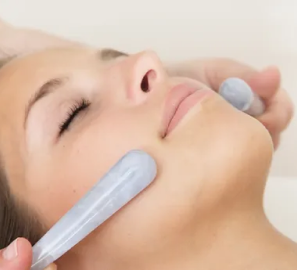Getting ready for your first waxing appointment can be both exciting and nerve-wracking. If you’re wondering what will happen, how to prepare, and what to expect afterward, you’re in the right place. This guide will walk you through the entire process so you can step into your appointment feeling informed and confident.
Understanding the Basics of Waxing
Waxing is a popular hair removal method that has been used for centuries across various cultures. Essentially, it involves applying a warm or cold wax to the skin where unwanted hair exists. Once the wax adheres to the hair, it is quickly pulled away, removing the hair from the root. This results in smoother skin that lasts much longer than shaving, which only removes hair at the skin’s surface. Understanding this basic concept of waxing is crucial as it sets the stage for what you can expect during your appointment.
There are a few types of waxing techniques available, including soft wax, hard wax, and even sugar wax. Each has its unique benefits and is suited for different skin types and hair textures. Soft wax is typically used for larger areas, while hard wax is great for sensitive areas since it’s gentler on the skin. Choosing a technique that suits your needs is vital for a successful waxing experience.
One key reason people prefer waxing over other methods is its long-lasting results. While shaving can result in stubble within a day or two, waxing leaves your skin smooth for weeks by pulling the hair from the root. This extended period of smoothness is appealing, especially during warmer months when bare skin is more prevalent. Plus, with regular waxing, some people notice that hair regrowth becomes finer and sparser.
Preparing for Your First Waxing Appointment
Preparation is essential for a successful waxing appointment. Start by ensuring that the hair you plan to have removed is at least a quarter of an inch long; this is typically about the length of a grain of rice. If your hair is too short, the wax may not grip it, leading to an ineffective session. On the other hand, if it’s too long, it can be more painful, so finding that sweet spot is key.
Next, consider your skin. It’s advisable to exfoliate the area two days before your appointment to remove dead skin cells. This helps the wax adhere better and reduces the likelihood of ingrown hairs. Avoid using any lotions or oils on the day of your appointment, as they can prevent the wax from gripping the hair properly. It might also be beneficial to wear loose-fitting clothing to the appointment, ensuring comfort after the procedure.
Staying hydrated is another often-overlooked aspect of preparation. Drinking enough water can help your skin stay supple, making the waxing process smoother. Additionally, if you’re often sensitive to pain, consider taking an over-the-counter pain reliever like ibuprofen about half an hour before your appointment. This can help make the experience more comfortable.
What Happens During the Appointment
When you arrive at the waxing salon, you’ll be greeted by a licensed esthetician. It’s perfectly natural to feel a bit anxious; however, you can expect them to guide you through the entire process. They will likely begin by discussing the area you want to have waxed and answering any questions or concerns you may have. Communication is key during this time, so don’t hesitate to express any apprehensions.
Once you feel comfortable, the esthetician will prepare the area. They might instruct you to change into a robe or provide you with a disposable covering for the region being waxed. After everything is set up, they will proceed to warm the wax to the appropriate temperature. This part of the process may involve some light testing on your skin to ensure the wax is not too hot, making your comfort a top priority.
The actual waxing process will then take place. The esthetician will apply the wax in the direction of hair growth and then remove it quickly in the opposite direction. Depending on the area being treated, they may take breaks to allow your skin to recover or to discuss how you’re feeling. Remember, everyone’s pain tolerance is different, and it’s okay to pause if you need to.
At the end of the session, the esthetician will cleanse the area and may apply a soothing lotion or oil to reduce any redness or irritation. They’ll likely share some aftercare tips to ensure you maintain that smooth skin for weeks to come.
Pain Management and What to Expect
Pain is often a primary concern for those considering waxing for the first time. It’s crucial to understand that everyone’s experience with pain varies widely based on individual tolerance levels and the area being waxed. Generally, sensitive areas, such as underarms and the bikini line, may cause more discomfort than less sensitive areas like the legs.
There are several strategies that can help manage the discomfort experienced during waxing. As mentioned earlier, taking an over-the-counter pain reliever prior to your appointment can be effective. Additionally, some people find that applying a numbing cream beforehand helps reduce sensitivity. However, it’s essential to consult with your esthetician about using any products prior to waxing, as they may have specific recommendations.
During the appointment, focus on your breathing. Deep, slow breaths can help ease anxiety and pain. Engaging in light conversation with the esthetician can also serve as a distraction, making the experience feel more pleasant. Post-waxing, it’s normal to experience some redness or irritation, but applying soothing aloe vera gel or other calming products can alleviate any discomfort.
Aftercare Tips for Best Results
After your waxing appointment, proper aftercare is essential to ensure the best results. First and foremost, avoid hot showers, saunas, or any strenuous activities for at least 24 hours. This is to prevent any excessive heat or sweating that could irritate your freshly waxed skin. Instead, opt for cool showers and gentle activities.
For the first few days, steer clear of exfoliants and harsh products that could irritate your skin. Instead, moisturize using a gentle, fragrance-free lotion. This will help keep your skin hydrated and soothed. Watching for any signs of irritation such as bumps or excessive redness is also crucial. If you notice anything out of the ordinary, don’t hesitate to contact your esthetician for guidance.
Another important aspect of aftercare is to avoid sun exposure. Your skin will be more sensitive after waxing, increasing the risk of sunburn. Make sure to apply sunscreen to exposed areas during the days following your appointment, particularly if you’ll be outside. Following these aftercare tips can help maintain your results and keep your skin looking great.
Common Concerns and FAQs
It’s completely normal to have questions or concerns before your first waxing appointment. One of the most common questions is whether waxing can cause ingrown hairs. While they can occur when hair grows back in a curled manner, proper aftercare, such as regular exfoliation and moisturizing, can help minimize this risk. Discussing this with your esthetician can provide further insight into preventing ingrown hairs.
Another frequent concern revolves around skin sensitivity. Many people worry that waxing will cause long-term irritation or other skin issues. Rest assured that a skilled esthetician will tailor the waxing process to your skin’s needs, ensuring safety and comfort. Most people find that skin sensitivity resolves quickly after the initial redness, returning to normal within a couple of hours.
Lastly, if you’re contemplating your first waxing session, you might wonder how often you should wax. For most individuals, a routine schedule every four to six weeks is ideal. This allows hair to grow long enough for effective waxing while keeping your skin smooth. It’s normal for hair growth patterns to differ, so tracking your personal schedule after a couple of sessions will guide you on what works best for you.
Final Thoughts on Your Waxing Journey
Waxing can seem intimidating at first, but with the right information, you’ll find that it’s a manageable and even enjoyable experience. Remember to follow the aftercare tips to maximize your results and maintain a smooth appearance. Embrace the process and enjoy the benefits of silky skin!

















